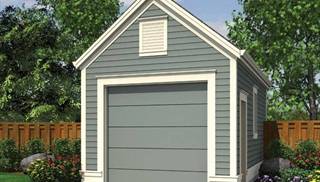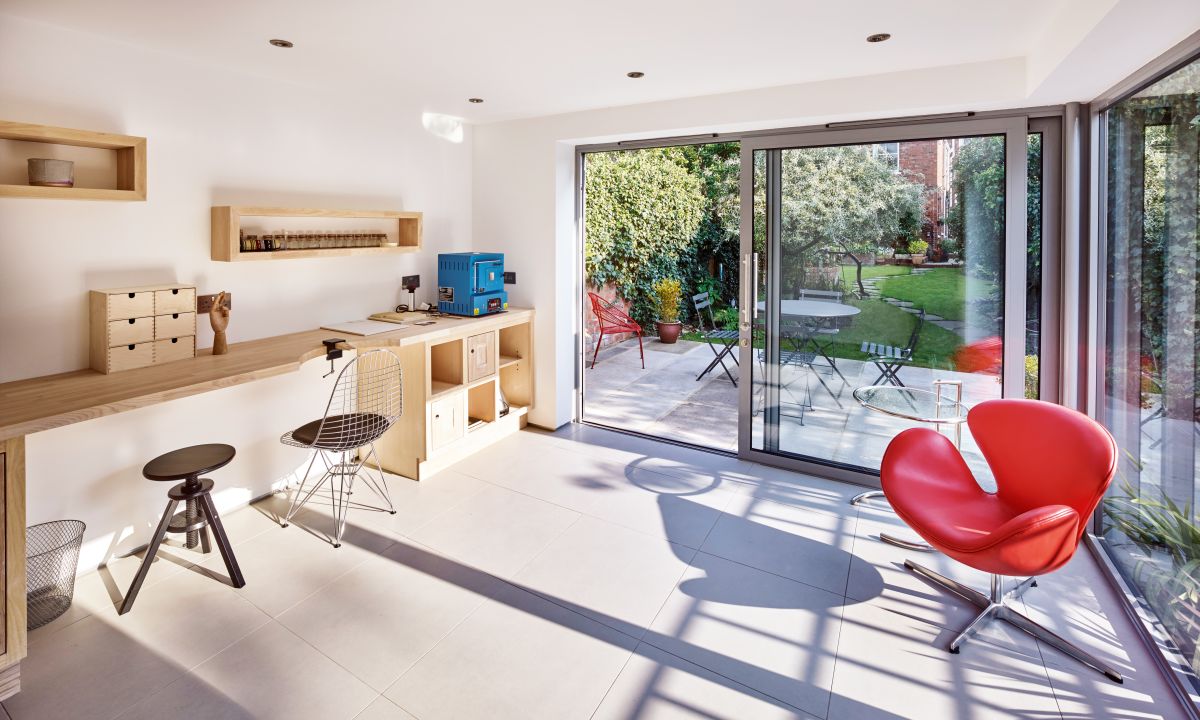
There are many factors to take into consideration when you replace your garage doors. You need to think about the size of your opening, but there are other important factors.
How to Select Your New Garage Door
The first step is to choose the right material for the frames. You can choose from vinyl or PVC as well as wood frames. The thicknesses of these materials can have a major impact on the size of the final opening. Make sure you do this before you begin any carpentry work.
You'll need to choose the style of door, springs, and tracks for your garage doors. Torsion and extension springs are available. These distribute the door's weight evenly. Torsion springs require more effort to install than extension springs. However, they provide more height options and are more suitable for large doors.
Most residential doors are made from steel, but wood is making a comeback for some homeowners. You can even have your garage door insulated to help lower energy bills and reduce noise.

The outer skin of a steel door is usually thick-gauge steel, while the core is a lighter-gauge material such as polystyrene or polyurethane. The steel door's insulation and strength is achieved by the combination of these two materials.
Some models have foam insulation, while others use polyurethane. This can reduce noise and increase energy efficiency. You'll want to choose a model that offers an R-value that matches the climate in your area.
Raised Panel Design
Raised panels add depth to traditional garage doors. These doors come in short or long panel options. To create a distinct appearance, they have a recessed edge and bring the interior of each panel slightly forward.
These doors are insulated using High-R Value Intellicore(r). Polyurethane or Polystyrene insulation. These doors provide superior performance as well as superior weather protection.
GOLD commercial sectional garage doors combine the symmetry of wood stile and rail door designs with a 3-layer insulated steel construction to deliver dependable performance. These doors come in a wide variety color options and are made with high-R-value Intellicore® polyurethane/polystyrene insulation.

Green Construction
These garage doors, made of polyurethane, are CFC and HCFC-free and manufactured from recycled steel. These doors are the best choice for your business or for industrial buildings. They offer energy efficiency and durability.
Our 10x10 garagedoor is ideal for commercial buildings, storage sheds and post frame buildings. It has a solid construction and lasts a long time. It is available in a variety of colors and styles to match your home's exterior, including solid wood and painted. You can also add style to your home by adding a decorative panel to the frame or a window design.
FAQ
What is the difference between building a new home and gutting a current one?
The process of gutting a house involves removing all contents inside the building. This includes walls, floors and ceilings, plumbing, electrical wiring and appliances. This is usually done when you are moving into a new home and need to make some adjustments before you move in. Because of the many items involved in gutting a house, it is usually very costly. The average cost to gut home ranges from $10,000 to $20,000, depending on your job.
A builder builds a home by building a house frame-by-frame, then adds doors, windows, doors and cabinets to the walls. This is often done after purchasing lots of land. Building a home usually costs less than gutting and can cost between $15,000 and $30,000.
When it comes down to it, it depends on what you want to do with the space. If you want to gut a home, you'll probably need to spend more because you'll be starting over. But if your goal is to build a house, you won't need to disassemble everything and redo everything. You can build it as you wish, instead of waiting to have someone else tear it apart.
What order should you renovate your house?
First, the roof. The second is the plumbing. The third is the electrical wiring. Fourth, the walls. Fifth, the floors. Sixth, windows. Seventh, doors. Eighth, the kitchen. Ninth, the bathrooms. Tenth, the garage.
Finally, you'll be ready for the attic after you've done all these things.
You can hire someone who will help you renovate your house if you are not sure how. Renovating your own house takes time, effort, and patience. It will also cost money. You don't need to put in the effort or pay the money.
Renovations aren't cheap, but they can save you tons of money in the long run. It's also a way to make your life more pleasant.
What are some of the largest costs associated with remodeling your kitchen?
There are a few important costs to consider when renovating a kitchen. These include demolition, design fees, permits, materials, contractors, etc. They seem quite small when we consider each of these costs separately. These costs quickly multiply when they are added up.
Demolition is likely to be the most expensive. This includes removing cabinets, countertops and flooring. Then you have to remove the drywall and insulation. Then, it is time to replace the items with newer ones.
The next step is to hire an architect to design the space. Next, you must pay for permits to ensure the project meets building codes. The next step is to find someone who will actually do the construction.
The contractor must be paid once the job has been completed. You could spend anywhere from $20,000 to $50,000, depending on how large the job is. That's why it is important to get estimates from multiple contractors before hiring one.
These costs can be avoided if you plan. You may be able get better material deals or to skip some of the work. You will be able save time and money if you understand what needs to done.
Many people will attempt to install their cabinets themselves. Because they don't have professional installation fees, this is a way to save money. Problem is, they often spend more time trying to place the cabinets themselves. A professional will usually finish a job in half as much time as you would.
A cheaper way to save money is buying unfinished materials. Pre-finished materials such as cabinets should be inspected before you purchase them. You can begin using unfinished materials right away if they are purchased. And you can always decide to change your mind later if something does not go according to plan.
Sometimes, though, it doesn't make sense to go through all of this. Plan is the best way to save on home improvements.
Why should I remodel my house rather than buy a new one?
While houses may get more affordable each year, the square footage you pay is still the same. You get a lot more bang than you pay, but that extra square footage is still a significant expense.
It's cheaper to maintain a house without much maintenance.
You can save thousands by remodeling your existing home rather than buying a completely new one.
You can transform your existing home to create a space that suits you and your family's lifestyle. Your home can be made more comfortable for your family.
How long does it take to remodel a bathroom?
Two weeks typically is required to remodel a bathroom. This can vary depending on how large the job is. Some jobs, such installing a vanity and adding a shower stall, can take only a couple of days. Larger projects like removing walls and installing tile floors or plumbing fixtures can take many days.
As a general rule, you should allow at least three days for each bedroom. So if you have four bathrooms, you'd need 12 days total.
Do you think it is cheaper to remodel a kitchen or a bathroom?
Remodeling a kitchen or bathroom is a costly undertaking. It might be more cost-effective to upgrade your home than you think, given how much you spend each month on energy bills.
You could save thousands each year by making a small upgrade. Simple improvements such as insulation of walls and ceilings can lower heating and cooling costs up to 30 percent. Even a small improvement can make a difference in comfort and increase resale.
The most important thing to keep in mind when planning for renovations is to choose products that are durable and easy to maintain. Materials such as porcelain tile, stainless steel appliances, and solid wood flooring last longer and require fewer repairs than vinyl or laminate countertops.
It is possible to reduce utility costs by replacing older fixtures with more modern models. Low-flow faucets and showerheads can reduce water consumption by as much as 50%. Compact fluorescent bulbs can be replaced with inefficient lighting to reduce electricity consumption by as much as 75 percent.
Statistics
- bathroom5%Siding3 – 5%Windows3 – 4%Patio or backyard2 – (rocketmortgage.com)
- 57%Low-end average cost: $26,214Additional home value: $18,927Return on investment: (rocketmortgage.com)
- 5%Roof2 – 4%Standard Bedroom1 – 3% (rocketmortgage.com)
- According to a survey of renovations in the top 50 U.S. metro cities by Houzz, people spend $15,000 on average per renovation project. (rocketmortgage.com)
- Windows 3 – 4% Patio or backyard 2 – 5% (rocketmortgage.com)
External Links
How To
Are you looking for an inexpensive and quick way to improve your patio?
The best way to do this is to add a stylish pergola. Pergolas add shade, privacy, and shelter to patios while keeping the area open and inviting. These are 10 reasons to build a pergola for your next outdoor renovation.
-
Add Privacy - If you live in an apartment or condo, a pergola provides a natural barrier between your neighbors and you. It blocks out noises from traffic and other sounds. Creating a private space makes your patio feel more secluded.
-
Provide Shade & Shelter - Pergolas offer protection against direct sunlight during hot summer days. A pergola will keep your patio cool and comfortable during hot summer days. Plus, a pergola adds a decorative element to your patio.
-
Enhance Outdoor Living Space - Adding a pergola to your patio creates a comfortable, relaxing space for entertaining friends and family. It can even become a small dining room if you wish.
-
You can make your patio stand out with a unique design statement. There are so many options. Pergolas can be modern or traditional.
-
You can make your patio more energy efficient by including large overhangs that will protect your furniture or plants from extreme weather conditions. This will not only protect your furniture but also keep your patio cooler.
-
Keep Out Unwanted Guests - Pergolas come in various shapes and sizes, which allows you to customize them according to the needs of your patio. A pergola can be built with lattice walls or arbors. The design options allow you to control who has access to your patio.
-
Pergolas can be easily maintained because they are built to withstand extreme weather. The paint you used may mean that the pergola will need to be repainted every few years. Dead leaves and branches may also have to be removed.
-
Increase the Value of Your Home by Adding a Pergola - A pergola can make your home appear larger. The pergola won't cost too much if you take care of it. A pergola is a beautiful addition to a home.
-
Protect your patio furniture from wind damage by using pergolas. They are easy-to-install and can be removed when necessary.
-
Easy on the Budget - A pergola is a great way to add elegance to your patio, without breaking the bank. Pergolas can be built for less than $1,000, according to most homeowners. This means you can easily finance this type of project.